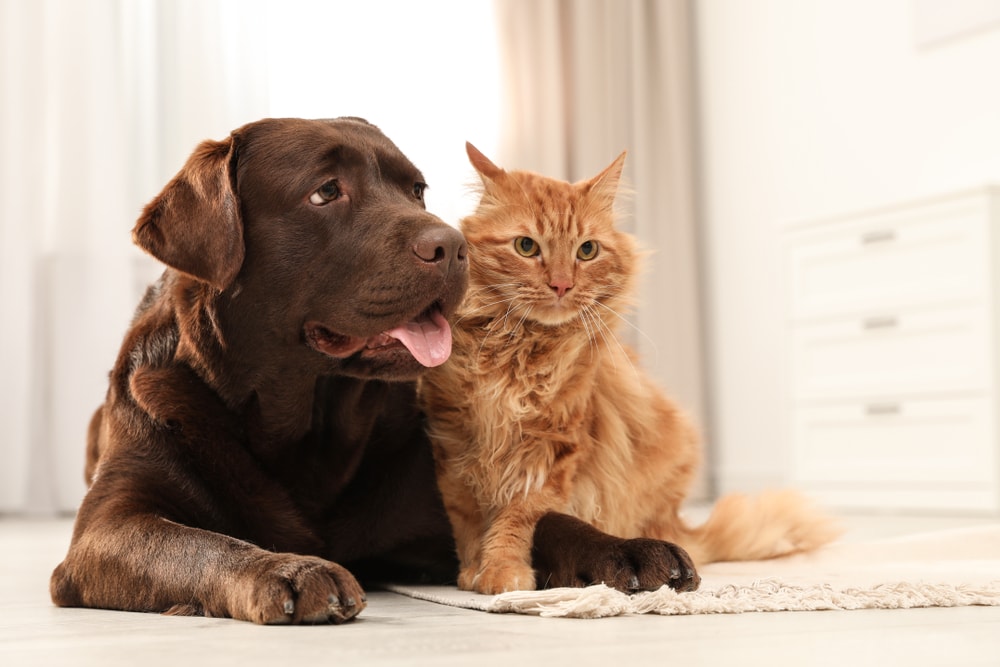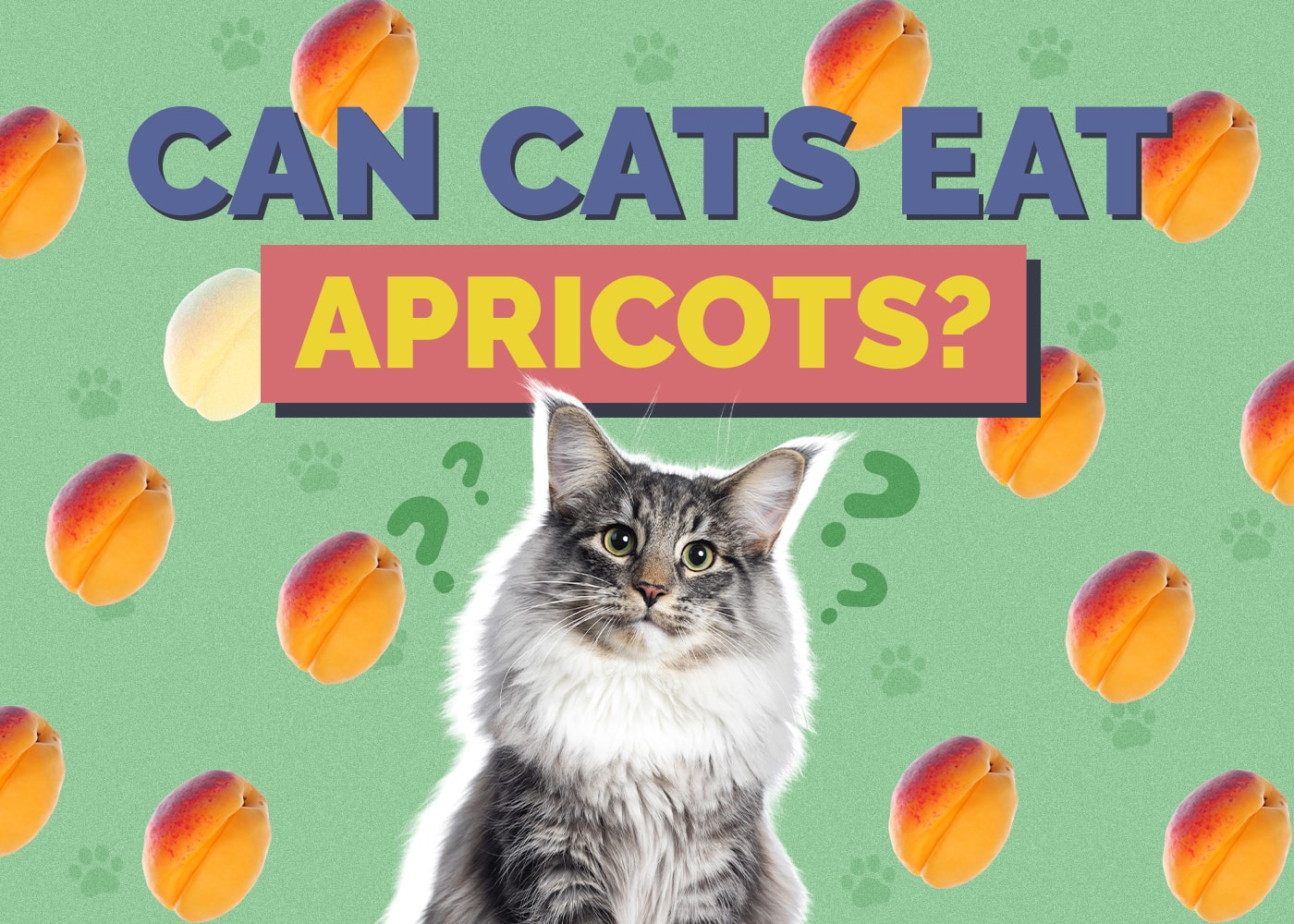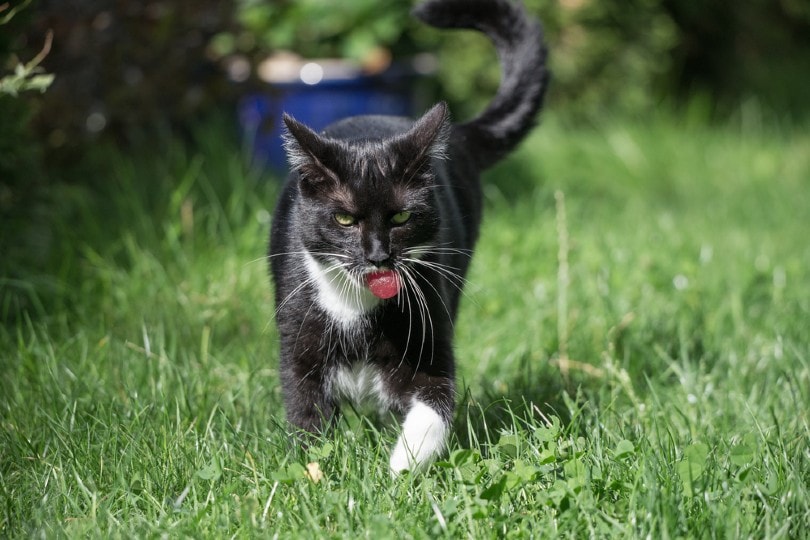White Persian Cat: Facts, Origin & History (With Pictures)

Updated on
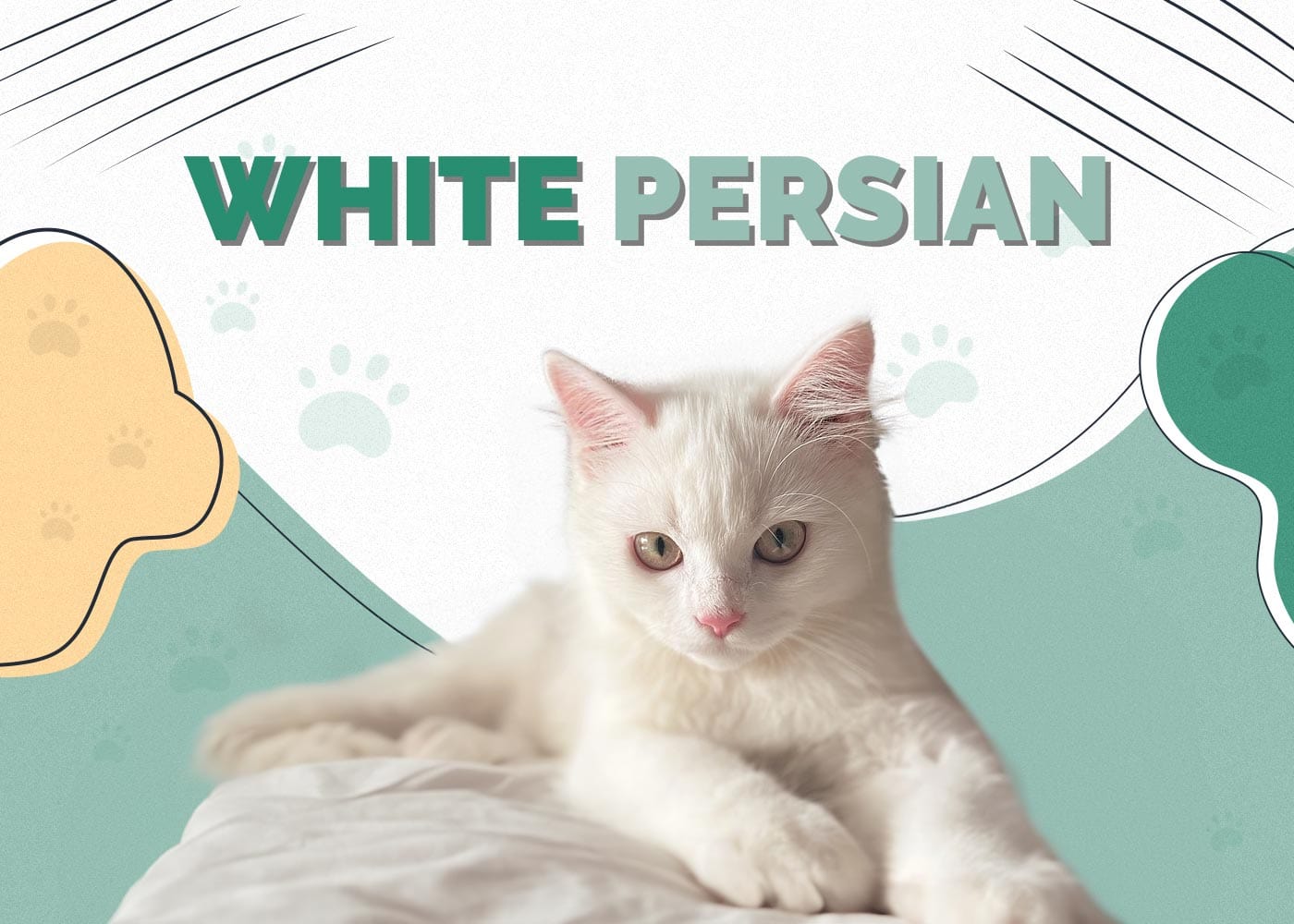
Persian cats are popular in the United States and worldwide. They are one of the oldest feline breeds and have enjoyed the spotlight throughout history. They’re not as energetic as other breeds, but they’re affectionate and love napping in their owners’ laps. Among the most iconic variations of the species is the White Persian cat.
| Height: | 10–15 inches |
| Weight: | 7–12 pounds |
| Lifespan: | 10–15 years |
| Suitable for: | Families that can offer a quieter lifestyle |
| Temperament: | Mellow, quiet, easygoing, playful, and affectionate |
The White Persian commands an air of royalty with their elegant coat that is undoubtedly a head-turner. However, their long fur requires daily grooming to keep it shiny and healthy. If you find White Persian cats intriguing, keep reading for details about their origin and history. We will also share information on what it’s like to live with a White Persian cat.
White Persian Cat Breed Characteristics
The Earliest Records of White Persian Cats in History
Like most breeds, the exact origins of Persian cats are murky. What is well known is that this ancient breed originated somewhere in Mesopotamia (later known as Persia before the name changed to modern-day Iran).
The cat’s elegant looks and long hair captured the attention of Pietro Della Valle, an Italian traveler who brought it to Europe in 1625. Numerous other travelers introduced the feline breed to France, where their numbers quickly multiplied. At some point, the Persian cats we know today were known as French cats!
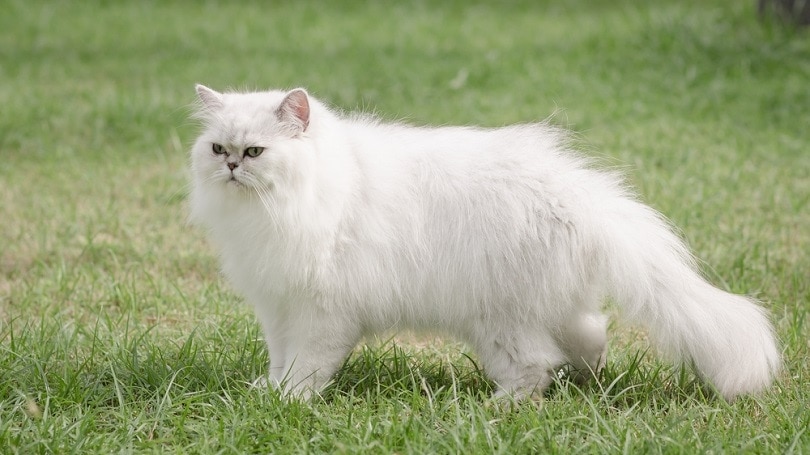
How White Persian Cats Gained Popularity
By the 1700s, Persians were already a popular breed in Europe. They even earned royal/ celebrity status because of Queen Victoria’s fondness for them. Later in the 19th century, they made their way to America, where cat shows were becoming more prevalent.
It was common to have Persian cat contestants, which further fueled the breed’s fame. Today, Persian cats still enjoy prominence. Some have appeared in popular movies like Snowbell in Stuart Little (1999). They have also been the cuddly companions of famous people, including Taylor Swift and Kim Kardashian.
Formal Recognition of White Persian Cats
Persian cats rapidly grew in popularity during the cat show era.; they entered shows and served as a magnet for crowds. Their success did not go unnoticed by local and international feline associations.
The Persian cat was one of the first breeds to be registered by the Cat Fanciers Association after its formation in 1906. Official breed standards acknowledge the White Persians as an acceptable color variation. Generally, it’s safe to assume the first white Persian was formally recognized in the 1900s.
Other bodies that recognize Persian cats include the Federation Internationale Feline (FIFe) and The International Cat Association (TICA).
Top 3 Unique Facts About White Persian Cats
1. The Winner of the World’s First Cat Show Was a Persian Kitten
The world’s first cat show was held in Crystal Palace, London, in 1871. It provided a platform for showcasing popular cat breeds like the Persians, Scottish Wild Cats, and Siamese cats. The show was an instant hit and attracted a huge crowd. Over 20,000 people showed up to bear witness as a Persian kitty was awarded the prize for being the “Best in Show.”
2. Some Persians Are Not Flat Faced
Persian cats are a brachycephalic breed that often has a smushed, flat face. This genetic modification occurred in one litter of kittens in the 1950s. For some reason, breeders liked the outcome of the mutation and bred more brachycephalic Persian cats.
Fortunately, some purebred Persians are not flat-faced and don’t suffer common brachycephalic concerns like runny eyes and breathing problems.
3. The World’s Largest Cat Painting Features Persian Cats
One of the world’s most well-known paintings, “My Wife’s Lovers,” by Carl Kahler, broke the record for being the world’s largest cat painting. It measures 6′ x 8.5′ and took up to three years to complete.
Among the 42 cats that appear in the masterpiece are fancy Persians. In 2015, the painting sold at a Sotheby’s auction for $826,000!
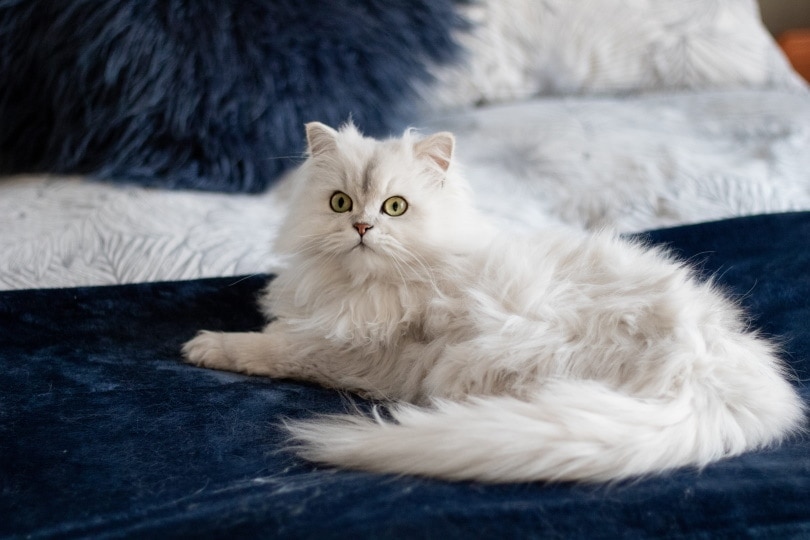
Do White Persian Cats Make Good Pets?
White Persian cats are a lot of work and need extra grooming to keep their coats in tip-top condition. However, this cannot take away from the fact that they make great pets. They are friendly, gentle, intelligent, and great to be around. Their loving and affectionate personalities make them wonderful furry companions.
Although they require more than average grooming, they are not energetic and are happier curling up on your lap than running around and hanging from your drapery. You can use the cuddling sessions to brush your pet’s fur daily.
As a mellow and quiet feline, the White Persian is not a fan of loud environments. They can tolerate older children who understand their need to nap and enjoy hours of silence. It is also imperative to note that the Persian has a lazy streak, and you must encourage them to exercise.
Conclusion
Persian cats are among the oldest felines in the world. They are also loved for their gorgeous looks and sweet temperaments and make excellent pets. The White Persians are no exception. Although they are only a color variation of the breed, it’s hard to deny that their fluffy white coats add to their overall cute factor.
Before adopting a White Persian, you must ensure they’re a perfect fit for your lifestyle. Investing in pet insurance is crucial because the breed, like many purebreds, is susceptible to several congenital medical issues. Adopting your kitty from an ethical breeder gives you the best odds of owning a healthy and happy pet.
See Also:
- Chinchilla Persian Cat: Facts, Origin & History
- Teacup Persian Cats: Think Twice Before You Bring One Home
Featured Image Credit: Cat Box, Shutterstock


